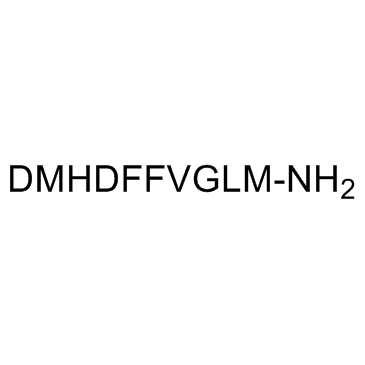Molecular profiling of postnatal development of the hypothalamus in female and male rats.
Deena M Walker, Dean Kirson, Lorenzo F Perez, Andrea C Gore
Index: Biol. Reprod. 87(6) , 129, (2012)
Full Text: HTML
Abstract
Reproductive function is highly dynamic during postnatal developmental. Here, we performed molecular profiling of gene expression patterns in the hypothalamus of developing male and female rats to identify which genes are sexually dimorphic, to gain insight into a more complex network of hypothalamic genes, and to ascertain dynamic changes in their relationships with one another and with sex steroid hormones during development. Using a low-density PCR platform, we quantified mRNA levels in the preoptic area (POA) and medial basal hypothalamus (MBH), and assayed circulating estradiol, testosterone, and progesterone at six ages from birth through adulthood. Numerous genes underwent developmental change, particularly postnatal increases, decreases, or peaks/plateaus at puberty. Surprisingly, there were few sex differences; only Esr1, Kiss1, and Tac2 were dimorphic (higher in females). Cluster analysis of gene expression revealed sexually dimorphic correlations in the POA but not the MBH from P30 (Postnatal Day 30) to P60. Hormone measurements showed few sex differences in developmental profiles of estradiol; higher levels of progesterone in females only after P30; and a developmental pattern of testosterone with a nadir at P30 followed by a dramatic increase through P60 (males). Furthermore, bionetwork analysis revealed that hypothalamic gene expression profiles and their relationships to hormones undergo dynamic developmental changes that differ considerably from adults. These data underscore the importance of developmental stage in considering the effects of hormones on the regulation of neuroendocrine genes in the hypothalamus. Moreover, the finding that few neuroendocrine genes are sexually dimorphic highlights the need to consider postnatal development from a network approach that allows assessment of interactions and patterns of expression.
Related Compounds
| Structure | Name/CAS No. | Molecular Formula | Articles |
|---|---|---|---|
 |
Neurokinin B trifluoroacetate salt
CAS:86933-75-7 |
C55H79N13O14S2 |
|
Current and future applications of GnRH, kisspeptin and neur...
2013-08-01 [Nat. Rev. Endocrinol. 9(8) , 451-66, (2013)] |
|
Neuroanatomy of the kisspeptin signaling system in mammals: ...
2013-01-01 [Adv. Exp. Med. Biol. 784 , 27-62, (2013)] |
|
Alteration in neonatal nutrition causes perturbations in hyp...
2012-08-15 [J. Neurosci. 32(33) , 11486-94, (2012)] |
|
Minireview: kisspeptin/neurokinin B/dynorphin (KNDy) cells o...
2010-08-01 [Endocrinology 151(8) , 3479-89, (2010)] |
|
Role for kisspeptin/neurokinin B/dynorphin (KNDy) neurons in...
2012-11-27 [Proc. Natl. Acad. Sci. U. S. A. 109(48) , 19846-51, (2012)] |